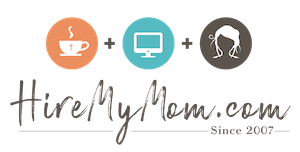What NOT To Put On Your Resume
When it comes to finding remote work opportunities, crafting a strong resume is essential. Your resume is often the first impression a potential employer will have of you, so it’s important to make sure it accurately represents your skills and experiences. However, not all resume skills are created equal. In fact, there are many that you should not include such as:
Generic Soft Skills That Don’t Impress
Including broad and non-specific soft skills on your resume can often dilute the overall impact of your professional qualifications. Phrases such as “excellent communication skills” or “strong leadership abilities” are overused and fail to convey the depth of your capabilities. These types of statements do not differentiate you from other candidates, as they are commonly claimed and hard to quantify. Instead, it’s crucial to showcase your soft skills through tangible achievements or specific instances that illustrate your capabilities. For instance, rather than saying you have “excellent communication skills,” you might mention “developed and implemented a communication protocol for remote teams that increased project completion rates by 30%.” This approach not only demonstrates your skill but also provides measurable evidence of your effectiveness.
If you don’t have data to support statistics such as the 30% mentioned above, you can still detail your experience so that companies better understand how you can help them. The key point here is to provide specific information so employers know what you are bringing to the table.
Outdated Technical Skills and Tools
Including obsolete technical abilities or software on your resume can inadvertently signal to potential employers that your skills have stagnated. You might feel like your resume is lacking and think to put in these tools as filler. Instead of highlighting familiarity with dated programs, emphasize your expertise with contemporary tools and platforms that are pertinent to remote work environments. For instance, rather than noting basic competence in an older software version, it’s more beneficial to mention your adeptness with current collaborative tools such as Slack, Zoom, or cloud-based project management systems like Monday.com. This not only demonstrates that you’re in tune with the technologies that facilitate effective remote work but also underscores your adaptability and willingness to learn and implement new solutions. Concentrate on those technical skills that mirror the demands of the remote job market, showing a commitment to maintaining a cutting-edge skill set.
Irrelevant Job Experiences and Skills
When tailoring your resume for remote work positions, it’s crucial to curate your content with precision, ensuring that every line speaks directly to the job you’re eyeing. Irrelevant job experiences and skills can overshadow the qualifications that make you an ideal candidate for a remote role, causing potential employers to miss your most valuable assets. For individuals, such as stay-at-home moms aiming to re-enter the workforce, this point is especially poignant. Rather than listing every past job or task, focus on selecting experiences that showcase your proficiency in remote-relevant skills like digital literacy, project management, or independent problem-solving.
Consider, for example, the management of household finances or coordination of a community event through online platforms — these experiences, while not traditional jobs, demonstrate capabilities highly transferable to remote positions. Highlighting your involvement in such activities can illustrate your adeptness at managing multiple tasks, organization, and using digital tools.
Overused Buzzwords That Lack Substance
In the competitive realm of remote work, your resume needs to shine without relying on the crutch of cliched buzzwords. Phrases such as “team player,” “hard worker,” and “strategic thinker” pepper too many resumes, making them blend rather than stand out. Instead of falling into the trap of these all-too-common terms, focus on substantiating your qualities through concrete examples and achievements.
For instance, rather than declaring yourself a “team player,” detail a time when you collaborated with a remote team to overcome a challenging project deadline, highlighting the role you played in fostering teamwork and project success. Rather than professing to be a “hard worker,” describe a scenario where your extra efforts directly contributed to a key accomplishment or significantly benefited a project. Swap “strategic thinker” for a description of how you identified a problem, devised a solution, and implemented a strategy that led to measurable improvements.
By replacing generic buzzwords with specific, evidence-based instances of your skills and achievements, you effectively demonstrate your qualifications and value to potential employers in a way that buzzwords alone cannot convey. Remember to keep these explanations short — provide just enough information to interest a company, and then you can explain it further in an interview. For example, you can use bullet points to share information such as “Lead team to transfer from past software to Quickbooks” for an accounting position.
Personal Traits That Are Better Shown Than Told
Highlighting personal traits on your resume can significantly bolster your candidacy for remote work, but it’s crucial to present these characteristics through demonstrable examples rather than mere assertions. Rather than claiming to be “analytical,” for instance, you might describe a time when your analytical approach led to the streamlining of a workflow process, saving time and resources. Similarly, instead of simply stating you are “innovative,” detail a scenario where you initiated and executed a project that introduced a novel solution to an existing problem, resulting in enhanced efficiency or profitability. This method of showcasing your traits provides a vivid illustration of how you apply your personal qualities in a professional setting, offering concrete evidence of your value to potential employers.
Overall, it is important to be more specific and intentional with the job information you provide to potential employers. You don’t want to stuff a resume with tons of text, but it is important to flesh out your experience a bit to communicate what you bring to the table. Need help creating your resume? Our HR experts are here to support you.
